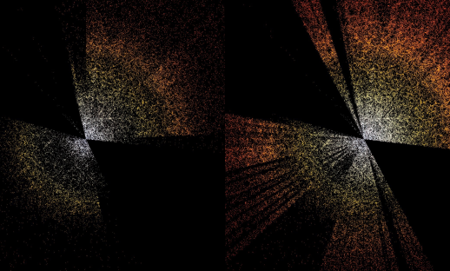
Dark Energy Spectroscopic Instrument (DESI)
05/02/25, 16:21
Last updated:
08/07/23, 13:11
Published:
A glimpse into the early universe
June 2023 marked the early release of data from the Dark Energy Spectroscopic Instrument (DESI). This instrument will study the nature of Dark Energy, an elusive addition to our cosmological equations that is thought to explain the accelerating expansion of the Universe. Current models estimate that Dark Energy comprises 68% of the total mass and energy of the universe and is distinct from matter and radiation in the sense that as space expands, its energy density remains constant rather than diluting. Imagine your favourite concentrated juice drink tasting the same regardless of how much water you add!
DESI will investigate the large-scale structure of the Universe, obtaining spectra of around 40 million galaxies and using their redshift to create 3-D distance maps. The five-year observation effort has aptly been dubbed an experiment in “cosmic cartography”.
(Redshift is the phenomenon wherein the light from objects moving away from us is stretched to longer and redder wavelengths.)
The revolutionary engineering behind this instrument enables the measurement of light from more than 100,000 galaxies in a single night! This includes 5,000 optical fibres, each connected to a robotic positioner programmed to aim at galaxies from a specified target list. The survey is conducted on the 4-metre Mayall Telescope at the Kitt Peak National Observatory in Arizona. Another staggering feature DESI boasts is that the eventual sample size will outstrip the 20-year Sloan Digital Sky Survey by a factor of 10 in extra-galactic targets! The early release contains 80 Terabytes of data, representing 2% of the total dataset that should be available in 2026. See Figures 1 and 2.
In 2005, the Sloan Digital Sky Survey found a signal that DESI will validate and make more precise. This signal is that of Baryonic Acoustic Oscillations (BAO).
In the incredibly early universe, there were protons and neutrons, known as baryons, which existed in a hot, dense plasma with electrons. Photons were trapped in this plasma due to the extremely high probability of colliding with an electron. The universe was opaque. Only when the universe had cooled sufficiently so that protons and electrons could form neutral hydrogen atoms—an epoch known as recombination*—*did photons decouple from matter. The Cosmic Microwave Background is actually caused by these photons that were emitted after recombination.
Before photons decoupled, the gravitational and high-pressure interactions in the plasma produced oscillations that radiated spherically outward from overdense regions, causing photons and baryons to travel through space together. However, as mentioned earlier, when the universe cooled and photons decoupled, the baryonic matter that was present in these oscillations became essentially frozen in space. The photons were free to stream throughout the now-transparent universe.
This provided a so-called standard ruler, the distance that these baryons had travelled as an acoustic oscillation prior to recombination. Linking this back to Dark Energy requires the important detail that the radius of the spherical shell of baryons is tied to the expansion rate of the universe. As Dark Energy has propelled the Universe to expand, this standard ruler has expanded with it. See Figure 3.
DESI's 3-D map of galaxies will provide a much clearer picture of the universe's large-scale structure, which is our only hope of finding the imprint of BAO. DESI will show (and has already shown) that there exists an overabundance of galaxies separated by a distance equivalent to the length of the standard ruler. Today, the size of this standard ruler is thought to be approximately 490 million lightyears.
DESI represents an impressive step into the era of precision cosmology, and it will require the efforts of hundreds of scientists to make sense of the vast quantities of data we expect by 2026.
Written by Joseph Brennan
Project Gallery



